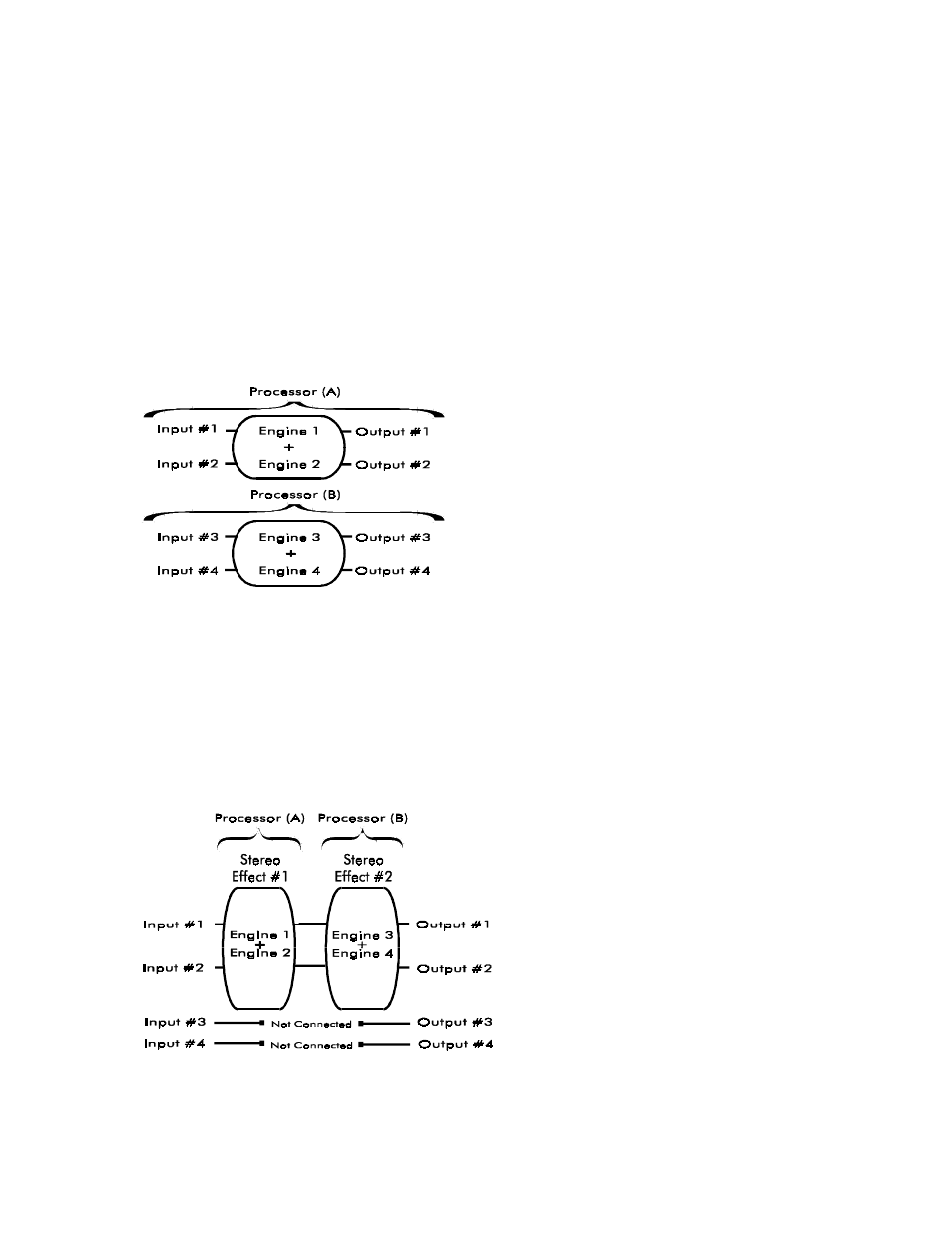The dmv-pro's adjustable parameters, Description of routings and engines, The dmv-pro’s adjustable parameters – ART Pro Audio DMV-Pro - Dual True-Stereo Effects Processor User Manual
Page 30

- 26 -
THE DMV-PRO’s ADJUSTABLE PARAMETERS
DESCRIPTION OF ROUTINGS AND ENGINES
The DMV-PRO contains four engines that can be routed in four different ways. Our proprietary Dynamic Engine
Allocation (DEA™) technology ensures that all DSP horsepower is effortlessly configured for your routing choice.
Repeatedly press the Routing button to scroll through the four routings: Twin Stereo, Cascade, Discrete 4, and Multi
FX.
Twin Stereo:
This routing turns the DMV-PRO into two true-stereo
processors. Inputs #1 and #2 feed the first processor
(consisting of grouped Engines #1 and #2) and exit at Outputs
#1 and #2, and Inputs #3 and #4 feed the second processor
(consisting of grouped Engines #3 and #4) and exit at Outputs
#3 and #4. The left and right audio channels of each processor
remain separate, but any modulated parameter, such the LFO
Speed for a chorus, is linked for both channels. With reverbs,
however, the left and right channels are cross-coupled in time to realistically emulate an acoustic space—they
are NOT reduced to mono. For a non-cross-coupled and completely independent stereo reverb (one that
couldn’t exist in the real world), choose Discrete 4 routing and put two identical reverb programs in Engine #1
and Engine #2.
Cascade:
This routing feeds the output of one stereo processor
(grouped Engines #1 and #2) into another (grouped
Engines #3 and #4). It only uses Inputs and Outputs #1
and #2; Inputs and Outputs #3 and #4 are disabled. As
with Twin Stereo, the left and right audio channels of
each processor remain separate, but modulated
parameters are linked.
